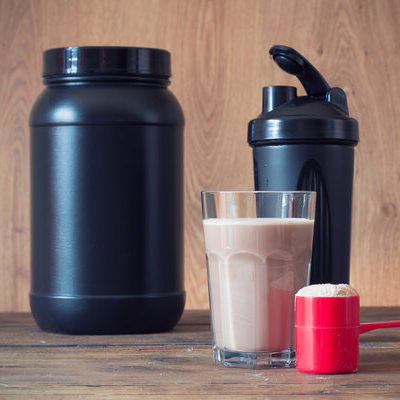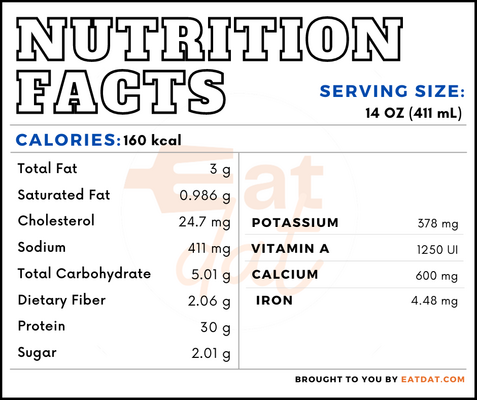
Protein Shake
What is Protein Shake?
A protein shake is a dietary supplement consisting of protein powder mixed with water or milk. It is often drunk before or after workouts in order to increase protein intake. The protein powder used is either whey protein or casein protein, both sourced from milk. Most powders contain a mixture of both since they work differently.
The top protein shake powders available on the market are:
- Myprotein Pro THE Whey+
- Bulk Powders Pure Whey Protein
- Optimum Nutrition Gold Standard 100% Casein
- Healthspan Elite Complete Vegan Protein
- SiS REGO Rapid Recovery+
- Myprotein Clear Whey Isolate
Origin of protein shakes
The first protein supplement came out in the 1950s, although it was solely used by competitive bodybuilders. That protein shake was called Hi-Proteen and was made from soy flour. In the 1960s, Blair’s Protein Powder, consisting of calcium and sodium caseinate derived from non-fat dry milk, egg white protein, and dried whole eggs, was invented by Irvin Johnson. The 1970s saw the development of research and innovation in this area, including membrane filtration, which blocks out unwanted compounds. By the 1980s, protein shake powders had become more mainstream.
Nutrition
The nutritional value for 411 mL of protein shake:

The general recommended daily protein intake for adults is about 45 to 56 grams. Most adults can obtain this from a regular balanced diet. However, more protein might be required for people who work out regularly and strenuously. Protein shakes make up for any protein deficiency and increase muscle building. They also tend to reduce fatigue, muscle soreness, and minor muscle damage.
However, whey protein shakes may not be suitable for people with dairy allergies or lactose intolerant people. Some protein powders may also contain toxins due to the manufacturing procedures and the existence of toxins in the soil. While there are some cases in which toxin-free protein powders are helpful, nutritionists recommend getting protein from whole foods.
Commercial production
The first step in producing protein shakes made with whey is cooling raw milk to 37.4°F (4°C), then pasteurizing it and cooling again. This milk is then processed to produce whey. The whey is concentrated and spray-dried to turn it into powder, which is then microfiltered to make whey isolate. Additives are added and proteins blended to give specific flavors to the product.
Protein powder must be stored in an airtight container in a cool and dry place. It must never be exposed to heat or moisture, which can lead to spoilage or molding. A prepared protein shake can be safely refrigerated for a couple of days.
Protein shake recipes
Protein shakes are usually consumed as a supplement mixed with water or milk. However, there are ways to jazz them up, though doing so might add calories and carbohydrates. Some delicious recipes include:
- Banana Protein Shake
- Vanilla Berry Protein Smoothie
- Peanut Butter Protein Cookies
- Snickerdoodle Protein Shake
- Clean Coconut Protein Shake
FDA regulations
The FDA defines whey protein concentrate (protein powder) as the substance obtained by the removal of sufficient nonprotein components from whey. The final product must not contain less than 25 percent protein. All aspects of the manufacturing, packaging, and labelling are also regulated by the FDA.
References
The hidden dangers of protein powders, Harvard Health Publishing, Harvard Medical School
https://www.health.harvard.edu/staying-healthy/the-hidden-dangers-of-protein-powders
Robert Schinetsky, The Complete History of Protein Powder, Tigerfitness
https://www.tigerfitness.com/blogs/supplements/the-complete-history-of-protein-powder
Ramos, Oscar & Pereira, Ricardo & Rodrigues, Rui M. & Teixeira, José & Vicente, António & X., Malcata. (2014). Whey and Whey Powders: Production and Uses. 10.1016/B978-0-12-384947-2.00747-9. https://www.researchgate.net/publication/271824941_Whey_and_Whey_Powders_Production_and_Uses
Kårlund, Anna et al. “Protein Supplements and Their Relation with Nutrition, Microbiota Composition and Health: Is More Protein Always Better for Sportspeople?.” Nutrients vol. 11,4 829. 12 Apr. 2019, doi:10.3390/nu11040829 https://www.ncbi.nlm.nih.gov/pmc/articles/PMC6521232/
